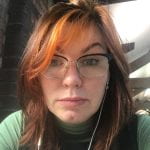Latest posts
- MAP International Online Conference 2025: Session Summaries Report 24 July 2025
- MAP 2025 Conference Highlights: Recordings and Slides 23 July 2025
- Journal article: Reimagining Peace Education in Nepal: Arts-Based, Learner-Centric Pedagogy for Social Justice and Equity 13 July 2025
- Curricula: Mithila art-focused local curriculum in Nepal 2 July 2025
- MAP International Online Conference 2025 1 June 2025
- Policy brief: Gira Ingoma book and policy brief: “The Culture We Want, for the Woman We Want” 28 November 2024
- Manuals and toolkits: GENPEACE Children’s Participation Module in the Development Process 13 November 2024
- Journal article: [Working Paper] Gira Ingoma – One Drum per Girl: The culture we want for the woman we want 30 October 2024
- Curricula: Beyond Tradition: Psychosocial Model 30 October 2024
- Curricula: Beyond Tradition Module: Revitalizing Lenong as a Model for Teaching Betawi Arts 30 October 2024
- Curricula: Beyond Tradition: Lenong Revitalisation as a Model for Teaching Betawi Cultural Arts 30 October 2024
- Beyond Tradition Lenong Performance “RAWR…! Kite Kagak Takut” 30 October 2024
Body Mapping for Peacebuilding
- Cultivating well-being and mental health
- Tackling child and gender-based violence
29th July 2024
Author

The AHRC MAP PhD researcher, Anna Smirnova, utilised body mapping methodology to facilitate the storytelling of young people in Kyrgyzstan, enabling them to analyse their experiences and integrate youth perspectives into conflict analysis and peacebuilding.
Body mapping is a creative process involving drawing, painting, and other arts-based techniques to visually represent aspects of individuals’ lives, bodies, and their world. This storytelling approach offers new insights into participatory methods, visual representation, and analysis by combining visual, narrative, and participatory data generation. It provides a framework for critically analysing power structures, cultural specificities, conflict-related factors, and promoting intergenerational dialogue.
Anna developed a detailed step-by-step toolkit to facilitate body mapping storytelling workshops. These workshops, conducted between December 2022 to May 2023, with young MAP participants in Bishkek and Dzhany-Dzher village, led to the creation of a series of body maps and accompanying stories. The narratives revealed the participants’ embodied experiences and highlighted concerns about their lives and conflicts, including loneliness and (non)acceptance, future fears and motivation, gender identity and inequality, insecurity, and violence. The catalogue of body maps accompanied by young people’s stories is available here.
Following the workshops, MAP partners and young people organised a series of body map exhibitions at various events in Bishkek, such as ‘The Cohesion Week’ and the FTI interactive-consultation meeting ‘Talk to Me’. These events provided young people with opportunities to share their problems and concerns with adults, empowering them to become co-creators of knowledge in arts-based research and interventions towards conflict resolution and peacebuilding.


Nurlan Asanbekov, the Principal Investigator of the MAP project ‘The Magic of Theatre’, produced an artistic response to the body mapping storytelling in the form of a short film. This film features three young female participants sharing their stories about the challenges faced by young women in Kyrgyzstan. It was presented to a wider audience at the 705 Theatre in Bishkek, followed by an engaging discussion on gender inequality and youth responses to the challenges faced by young women.

Anna’s significant contribution to the body mapping storytelling methodology was recognised by the Award Committee of the International Visual Sociology Association. As the 2024 recipient of the Prosser Award for outstanding work in visual methodologies, she presented her work at the official Awards Ceremony at the IVSA Conference on June, 29 in Xalapa, Mexico. Her presentation, which provided a rationale for body mapping storytelling as a powerful visual methodology, can be viewed here. More information about her work is available on the IVSA website here.

Dialogue through Art
Advocacy for priority youth issues, raising topics using arts-based tools and making recommendations at regional and national levels.
